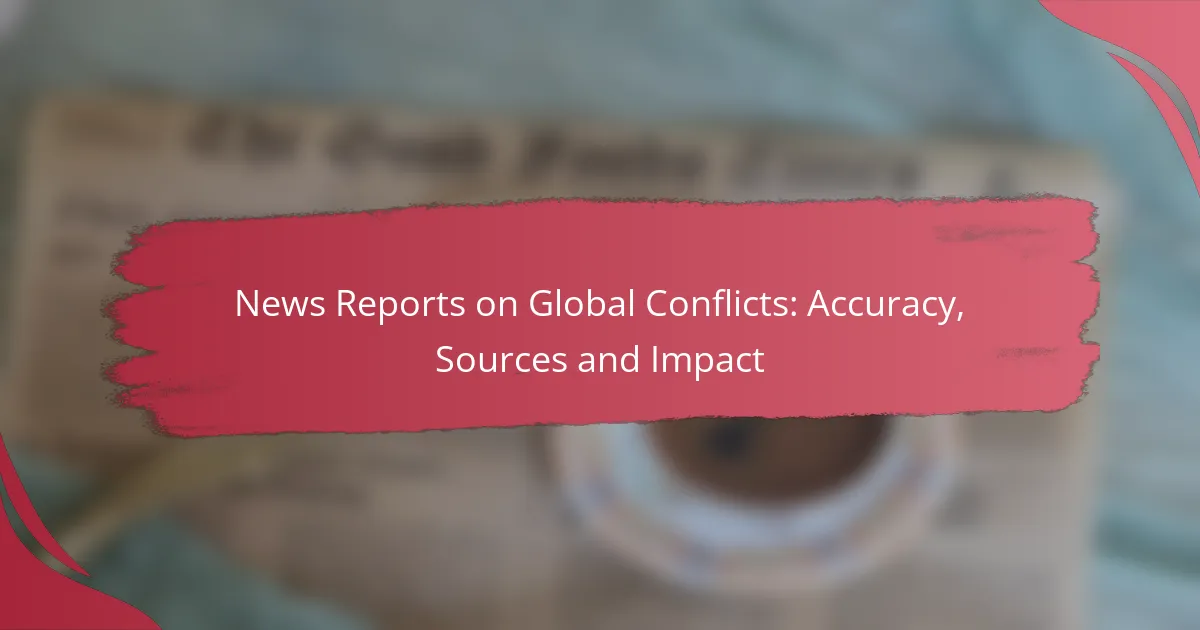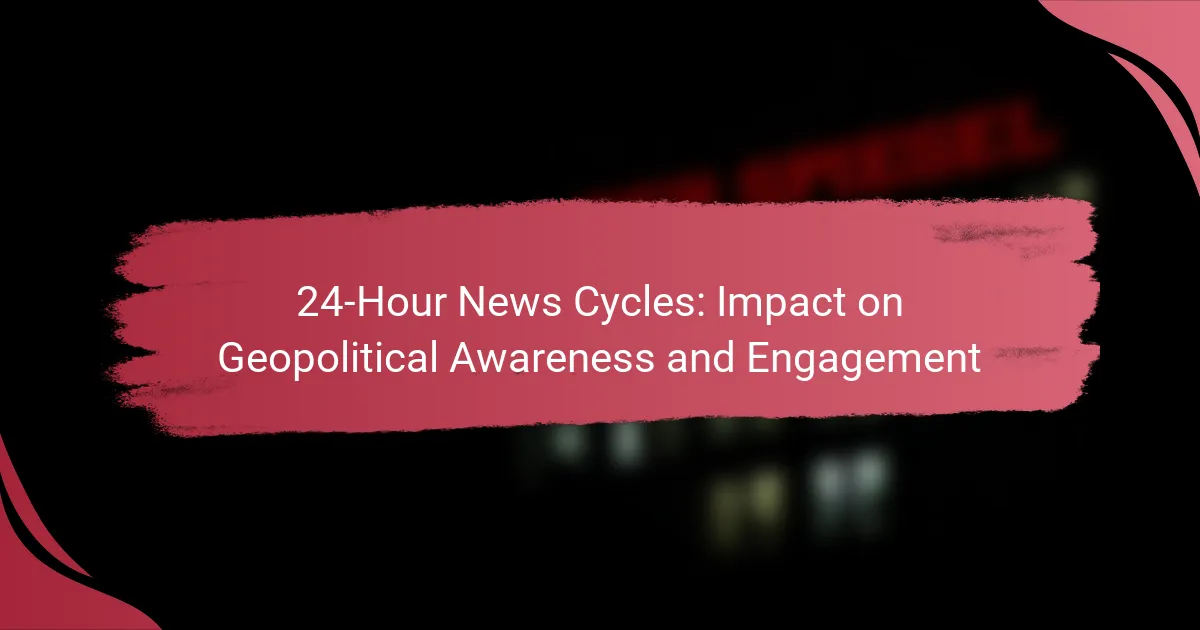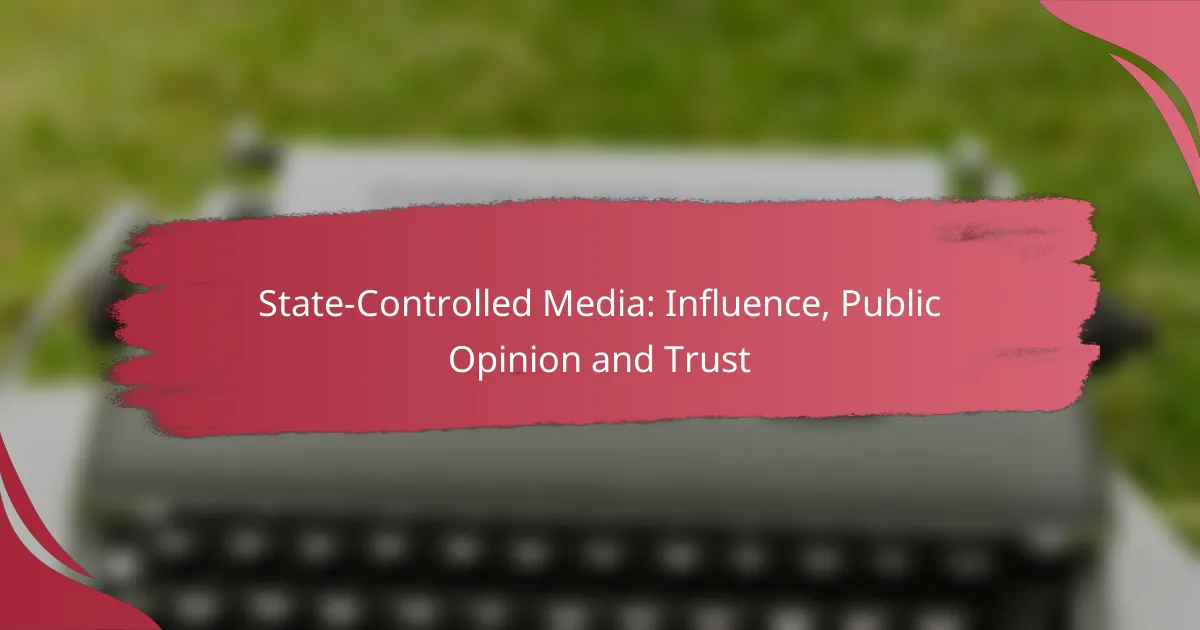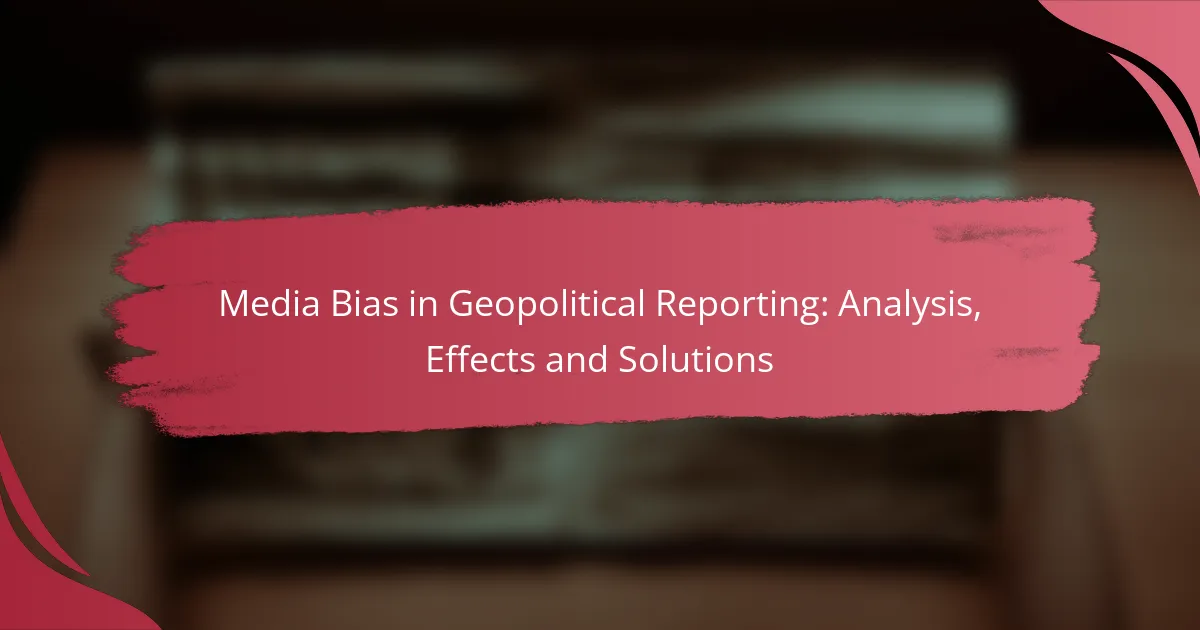News reports on global conflicts play a critical role in shaping public perception and policy, yet their accuracy can vary widely based on the sources and reporting methods employed. Reliable information is essential, as misinformation can distort understanding and exacerbate tensions, making it vital for consumers to critically evaluate the credibility of their news sources.
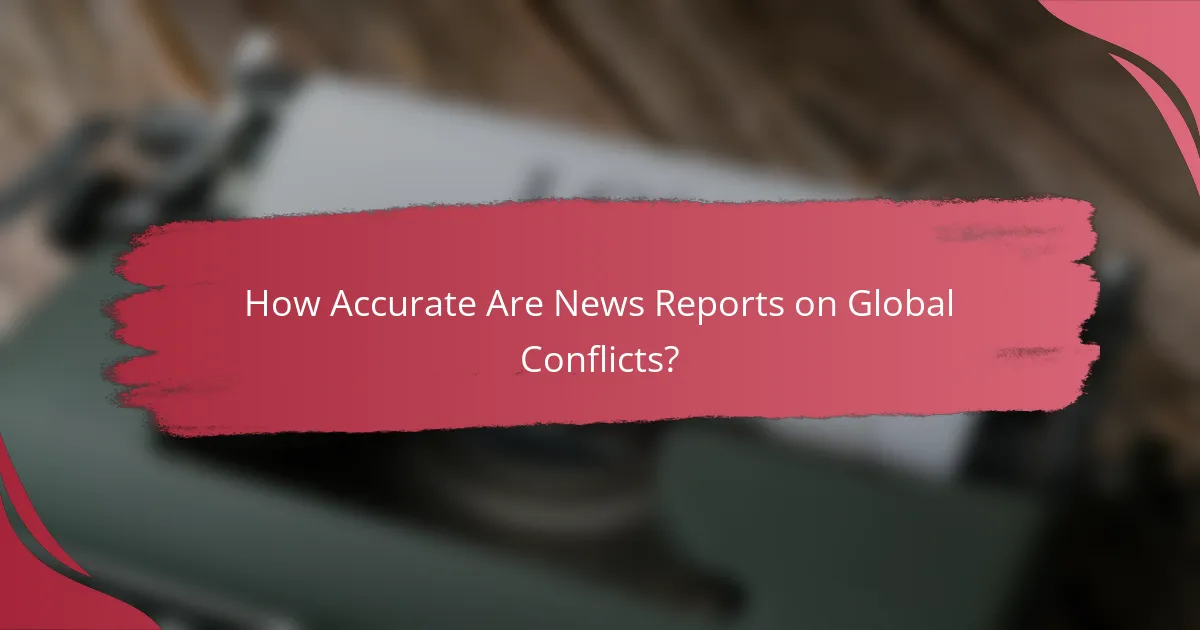
How Accurate Are News Reports on Global Conflicts?
News reports on global conflicts can vary significantly in accuracy, influenced by the sources used and the methods of reporting. Understanding the reliability of these reports is crucial for consumers of news, as misinformation can shape public perception and policy decisions.
Fact-checking organizations
Fact-checking organizations play a vital role in assessing the accuracy of news reports on global conflicts. They evaluate claims made by media outlets and provide evidence-based conclusions. Examples include Snopes, FactCheck.org, and PolitiFact, which often focus on political statements but also cover major news events.
When using fact-checking resources, consider their methodology and transparency. Look for organizations that cite sources and provide context to their findings, as this enhances credibility. Regularly checking these organizations can help you discern fact from fiction in conflict reporting.
Peer-reviewed studies
Peer-reviewed studies offer an academic perspective on the accuracy of news reports regarding global conflicts. These studies often analyze media coverage, examining biases and the portrayal of events. Research may reveal patterns in how different outlets report on specific conflicts, highlighting discrepancies and potential misinformation.
To utilize peer-reviewed studies effectively, search databases like Google Scholar or JSTOR for relevant articles. Look for studies that focus on specific conflicts or media outlets to gain insights into reporting accuracy. This can provide a deeper understanding of how conflicts are framed in the media.
Media bias analysis
Media bias analysis investigates how various news outlets may present conflicts differently based on their editorial slants. Understanding bias is essential for evaluating the accuracy of reports, as it can influence the portrayal of facts and events. Tools like Media Bias/Fact Check and AllSides can help identify the political leanings of different media sources.
When consuming news, be aware of the potential for bias. Cross-reference reports from multiple outlets with varying perspectives to get a more balanced view of a conflict. This practice can help mitigate the impact of biased reporting and lead to a more informed understanding of global events.
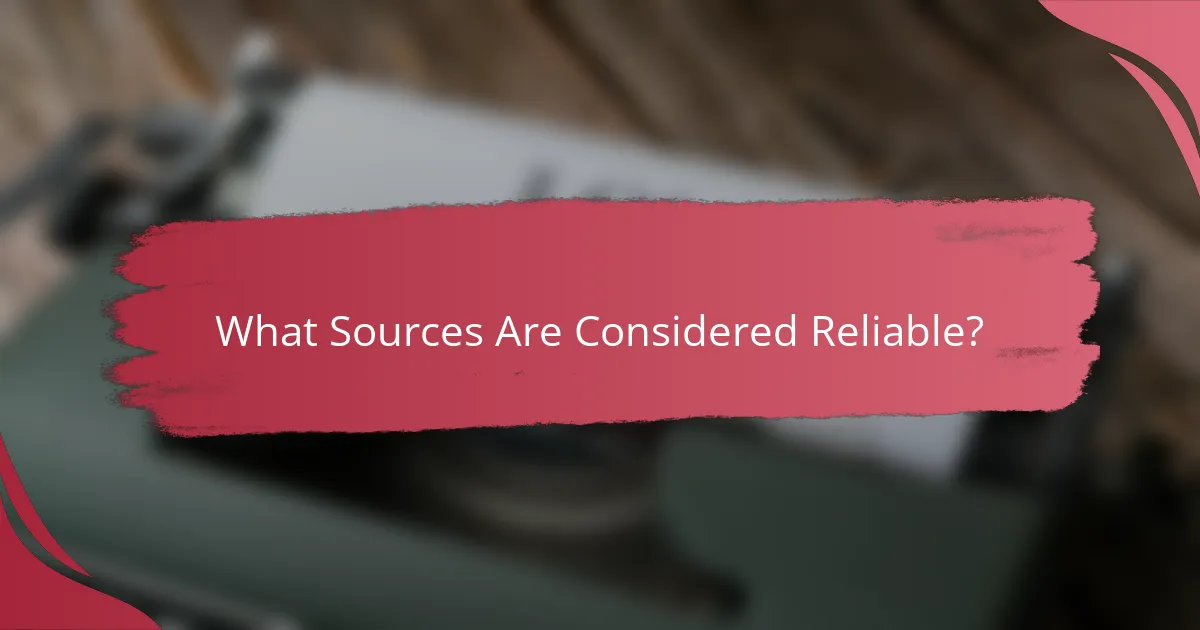
What Sources Are Considered Reliable?
Reliable sources for news reports on global conflicts typically include established news agencies, independent journalists, and reports from governments and NGOs. These sources are valued for their credibility, thoroughness, and adherence to journalistic standards.
Established news agencies
Established news agencies like Reuters, Associated Press, and BBC are often regarded as reliable sources due to their rigorous editorial processes and global reach. They employ professional journalists who adhere to strict ethical guidelines, ensuring accuracy and impartiality in their reporting.
When evaluating information from these agencies, consider their reputation for fact-checking and their history of covering conflicts. Their reports usually include multiple perspectives, which helps provide a balanced view of the situation.
Independent journalists
Independent journalists can offer unique insights and on-the-ground perspectives that larger agencies may overlook. They often report from conflict zones, providing firsthand accounts that can be invaluable for understanding complex situations.
However, it’s essential to assess the credibility of independent journalists by checking their previous work, affiliations, and any potential biases. Look for those who have established a track record of accurate reporting and who are transparent about their sources.
Government and NGO reports
Government and NGO reports can provide essential data and context regarding conflicts, often including statistics, humanitarian assessments, and policy analysis. Organizations like the United Nations or Human Rights Watch publish detailed reports that can be useful for understanding the broader implications of a conflict.
While these reports can be informative, they may also carry biases based on the organization’s agenda. It’s crucial to cross-reference their findings with independent sources to gain a more comprehensive understanding of the situation.
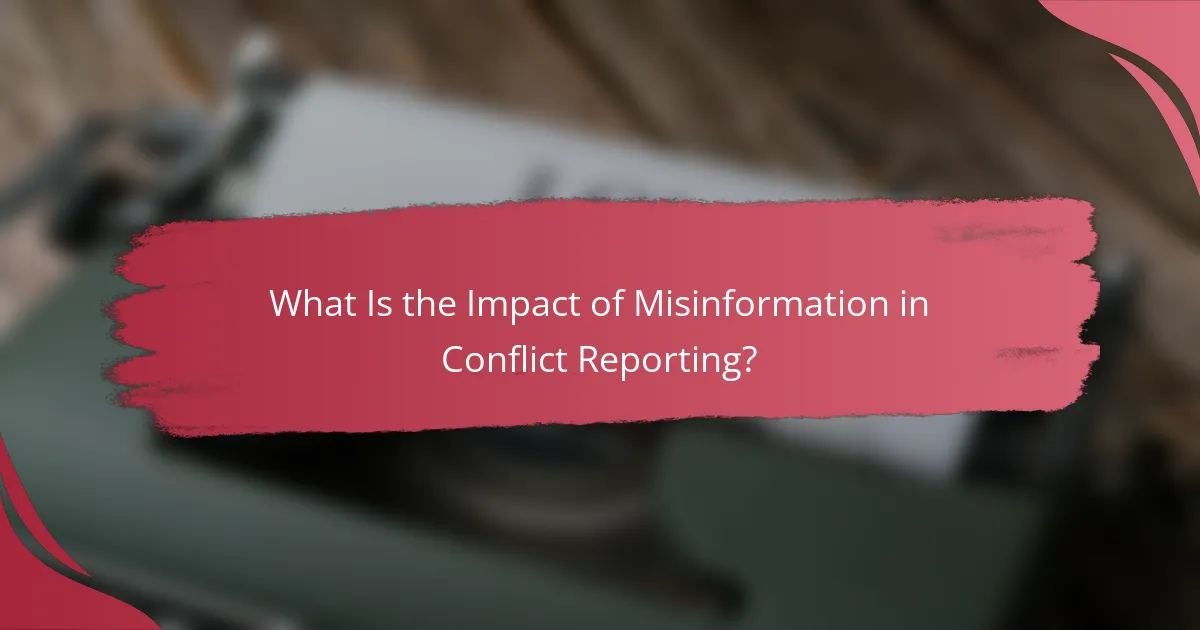
What Is the Impact of Misinformation in Conflict Reporting?
Misinformation in conflict reporting can significantly distort public understanding and response to crises. It can lead to misguided opinions, policy decisions, and even exacerbate tensions between conflicting parties.
Public perception shifts
Misinformation can rapidly alter public perception of conflicts, often leading to polarized views. For instance, exaggerated reports of violence can incite fear and outrage, while downplaying atrocities may foster apathy. This shift can result in public pressure on governments to take action based on inaccurate narratives.
Social media plays a critical role in disseminating misinformation, allowing false narratives to spread quickly and widely. As a result, the public may form opinions based on incomplete or misleading information, complicating efforts for peace and resolution.
Policy changes
Governments often respond to public perception shaped by misinformation, leading to policy changes that may not reflect the reality on the ground. For example, a surge in public outrage over a reported incident can prompt military interventions or sanctions that escalate rather than resolve conflicts.
In some cases, misinformation can lead to the implementation of policies that prioritize short-term political gains over long-term stability. Policymakers must critically assess the sources and accuracy of information before making decisions that impact international relations.
Escalation of conflicts
Misinformation can contribute to the escalation of conflicts by inciting violence or encouraging retaliatory actions. When parties involved in a conflict believe false narratives about their adversaries, it can lead to an increase in hostilities and a breakdown of dialogue.
Moreover, misinformation can create a cycle of distrust, making it difficult for conflicting parties to engage in negotiations. Efforts to mitigate misinformation through fact-checking and transparent reporting are essential to reduce the risk of escalation and promote peaceful resolutions.
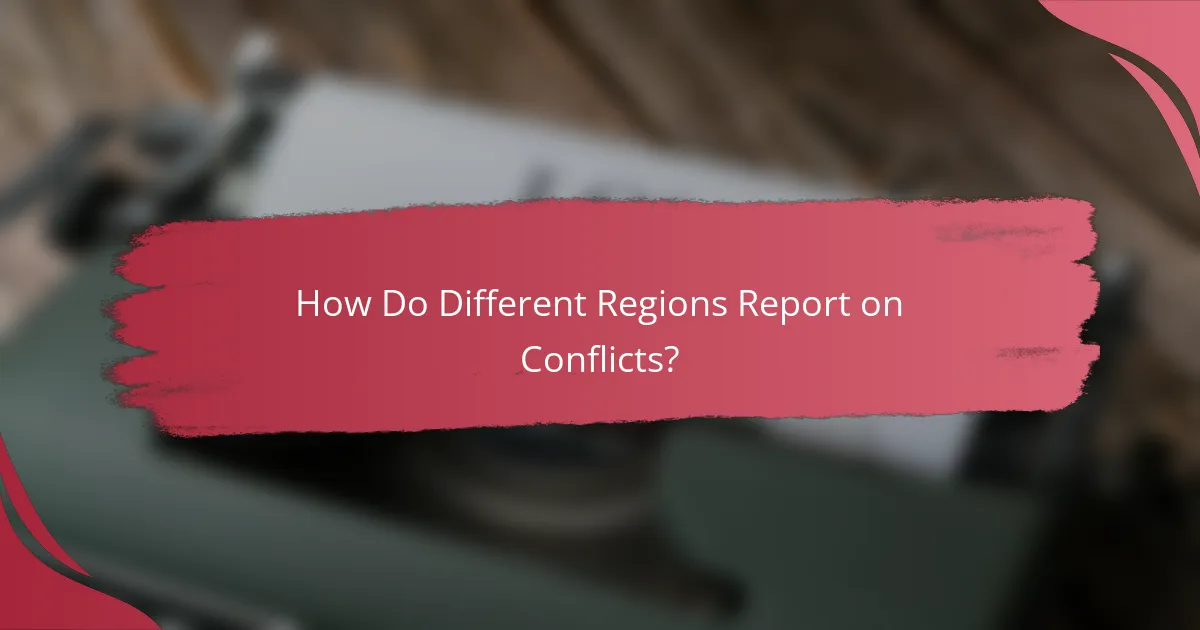
How Do Different Regions Report on Conflicts?
Reporting on conflicts varies significantly across regions, influenced by cultural, political, and historical contexts. Understanding these differences is crucial for interpreting news coverage and its impact on public perception.
Western media perspectives
Western media often emphasizes individual narratives and human interest stories, focusing on the humanitarian aspects of conflicts. Coverage tends to highlight government responses and international implications, frequently critiquing military actions and political decisions.
Major outlets like CNN, BBC, and The New York Times typically prioritize fact-checking and sourcing from multiple perspectives, though they may face accusations of bias depending on their editorial stance. This can lead to polarized views among audiences, especially regarding conflicts involving Western nations.
Middle Eastern media coverage
Middle Eastern media often reflects regional viewpoints shaped by historical grievances and political affiliations. Coverage may vary significantly between state-run and independent outlets, with the former often promoting government narratives while the latter may provide more critical analyses.
For example, Al Jazeera offers extensive coverage of Arab perspectives, often focusing on the impact of conflicts on local populations. In contrast, outlets like Al Arabiya may align more closely with specific political agendas, affecting the portrayal of events.
Asian news outlets’ approaches
Asian news outlets typically adopt a diverse range of reporting styles influenced by local contexts and government regulations. Countries like China and India have state-controlled media that may prioritize national interests and narratives, while independent outlets might offer alternative viewpoints.
For instance, The Times of India often covers regional conflicts with an emphasis on diplomatic relations, whereas Chinese state media may focus on stability and economic implications. This diversity can lead to varying interpretations of the same conflict, making it essential for consumers to seek multiple sources for a well-rounded understanding.
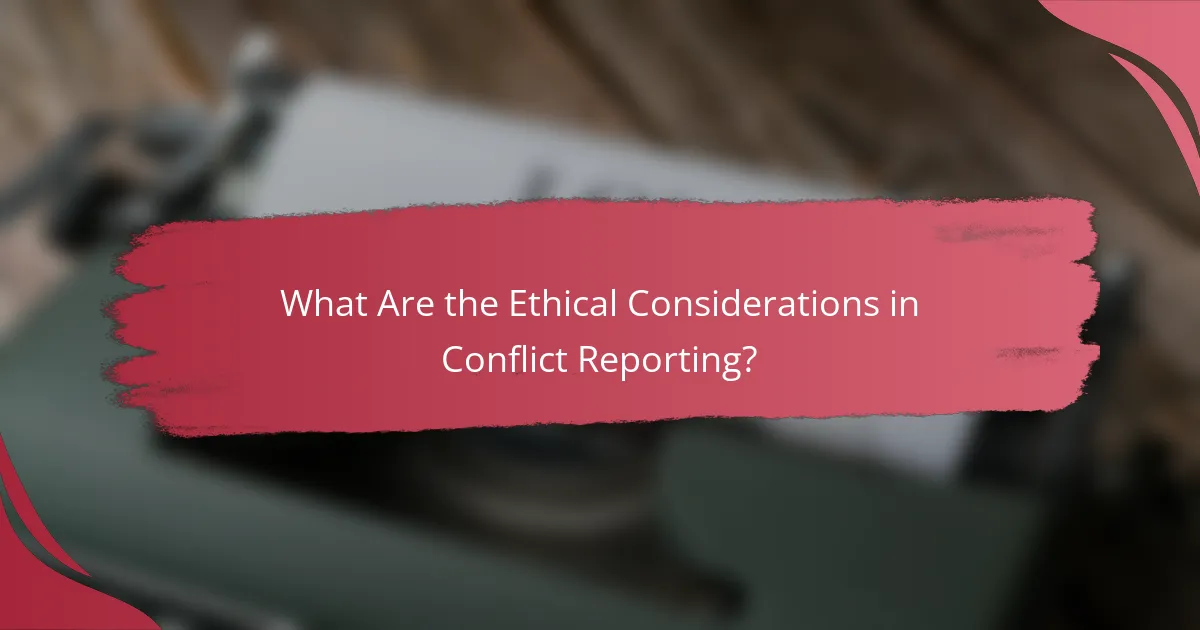
What Are the Ethical Considerations in Conflict Reporting?
Ethical considerations in conflict reporting revolve around accuracy, sensitivity, and the potential impact on affected communities. Journalists must balance the need for truthful reporting with the responsibility to avoid causing harm or distress to those involved.
Journalistic integrity
Journalistic integrity is foundational in conflict reporting, requiring reporters to verify facts and present information fairly. This includes cross-checking sources and avoiding sensationalism that can distort the truth. Upholding integrity fosters trust with audiences and the communities being reported on.
To maintain integrity, journalists should adhere to established codes of ethics, such as those from the Society of Professional Journalists or similar organizations. These guidelines emphasize accuracy, accountability, and transparency in reporting.
Impact on affected populations
The impact of conflict reporting on affected populations can be profound, influencing public perception and policy decisions. Reports can shape narratives that either support or undermine humanitarian efforts, depending on how they frame the situation. Journalists must consider the potential consequences of their stories on those directly affected.
For instance, highlighting the resilience of communities can foster support and aid, while focusing solely on violence may lead to desensitization or stigma. Engaging with local voices and perspectives can help ensure that reporting reflects the complexities of the situation and promotes understanding.
Use of graphic content
The use of graphic content in conflict reporting raises ethical dilemmas regarding the portrayal of violence and suffering. While such images can convey the severity of a situation, they can also desensitize audiences or exploit the suffering of individuals. Journalists should weigh the necessity of graphic content against its potential to cause harm.
Guidelines suggest using graphic images sparingly and with clear context, ensuring that they serve a purpose in informing rather than shocking the audience. Providing trigger warnings and considering the emotional impact on viewers can help mitigate negative effects while maintaining journalistic responsibility.
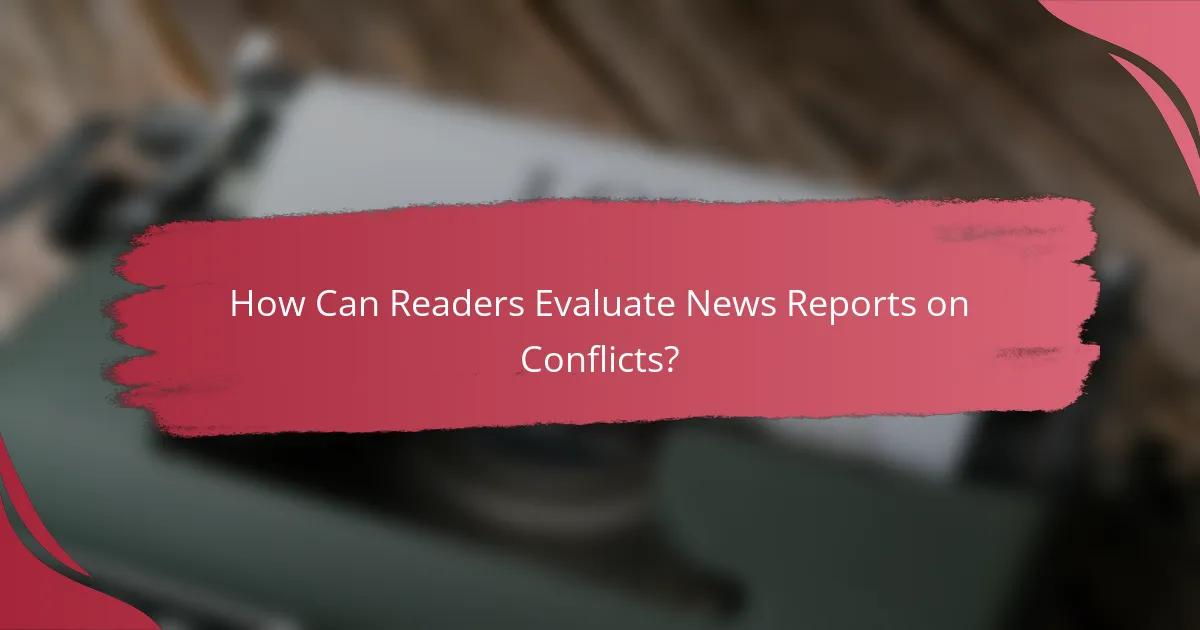
How Can Readers Evaluate News Reports on Conflicts?
Readers can evaluate news reports on conflicts by assessing the credibility of sources, cross-referencing information, and understanding the context of the reporting. This approach helps ensure that the information is accurate and reliable, which is crucial in understanding complex global issues.
Cross-referencing sources
Cross-referencing sources involves checking multiple news outlets and reports to verify the accuracy of the information presented. This practice helps identify any discrepancies and provides a more comprehensive view of the situation. Reliable sources often include established news organizations, expert analyses, and official statements.
When cross-referencing, consider the reputation of the sources. Look for reports from organizations known for their journalistic integrity, such as BBC, Reuters, or Al Jazeera. Additionally, pay attention to the date of publication, as the context of conflicts can change rapidly, making older reports less relevant.
To effectively cross-reference, create a simple checklist: 1) Identify at least three different sources covering the same event, 2) Note any significant differences in reporting, and 3) Assess the credibility of each source based on their history and expertise. This method will enhance your understanding and help you draw informed conclusions about the conflict.
